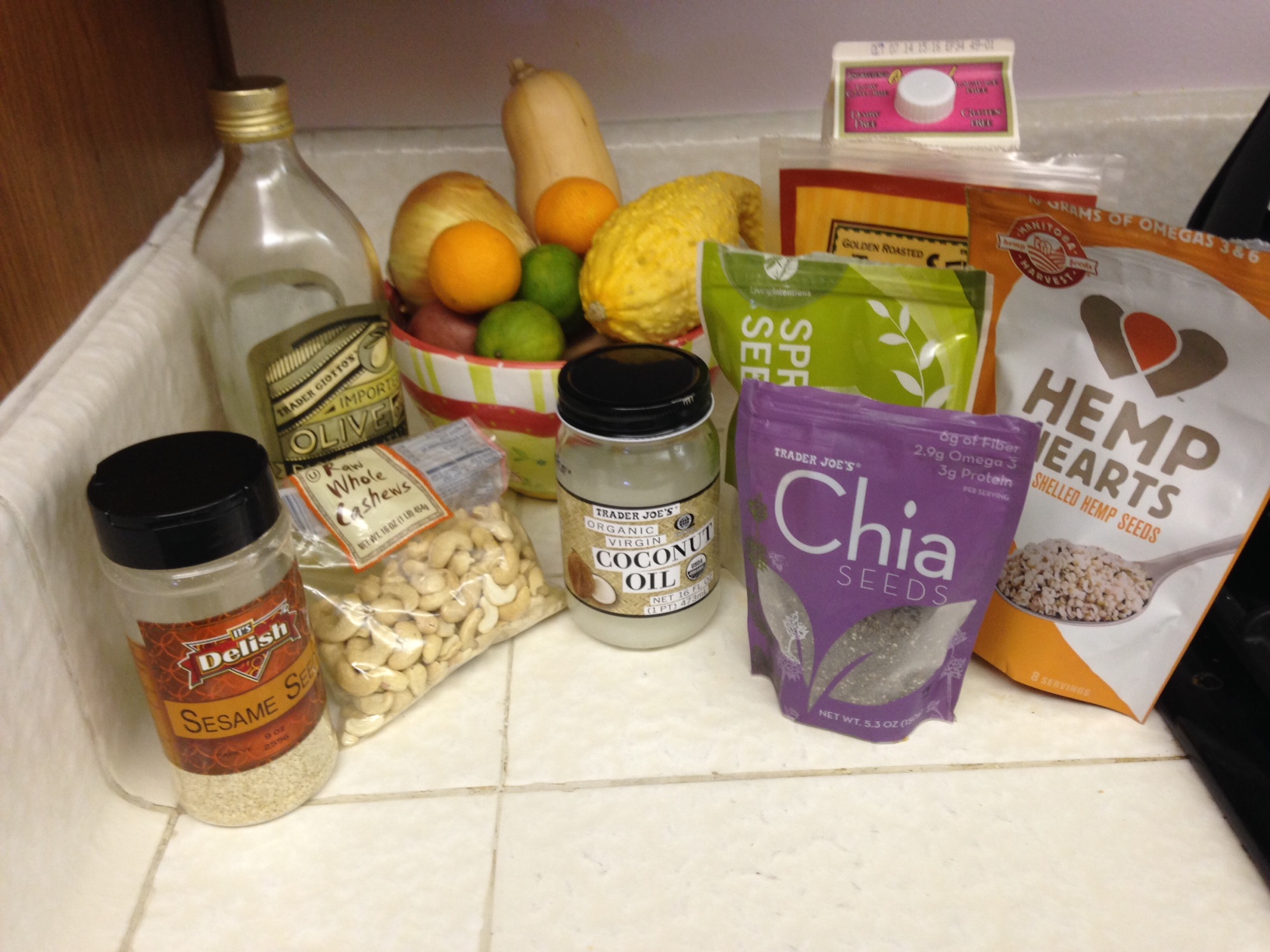
Keep a healthy kitchen stocked with these simple staples.
1) Fresh Herbs and spices
Keep your meals exciting by mixing up herbs and spices to add flavor. A simple dish of lean protein and vegetables can be done a thousand ways by using Creole, Italian, lemon-pepper, Thai, Mexican, or Indian herbs and spices. This is key to keeping meals enticing when you’re trying to stick to a diet plan or maintain a specific number of calories. Rather than adding extra oils or salts, the herbs and spices will add flavor, not calories.
2) Dark leafy greens
Fill up your plate with kale, spinach, romaine or arugula lettuces first. It will ensure that you get a healthy dose of nutrients and fiber along with your meal. Also, having a fuller plate has been shown to create a feeling of fullness and satisfaction. You’ll consume more vegetables without feeling the need to reach for seconds.
3) Yogurt or applesauce
Both of these are great substitutes for butter or oil when baking. There are many non-dairy yogurts available now, such as coconut, soy and almond. Try to stay away from any brands which contain high fructose or trans fats.
4) Healthy oils
Not all fat is bad for you! Keep your cupboards stocked with the healthiest choices. Coconut oil is in the spotlight for its ability to withstand heat at high temperatures. Its slight flavor will taste awesome when used to cook eggs, popcorn, and sautéed vegetables. Olive oil is great to dress vegetables to ensure you absorb all the nutrients (A, D, E and K are “fat soluble” vitamins that can only be absorbed by your body unless consumed with a little fat).
5) Almonds or other raw nuts
Add protein, healthy fats, and a fun texture to meals with nuts like almonds, walnuts, cashews, or pistachios. Plus, you’ll always have a filling snack on hand. Measure 1/4 cup and store in a reusable container so you don’t overdo it.
6) Lean Proteins
Make every meal filling with lean protein. Did you know, pound for pound, broccoli has more protein than beef or chicken? For lean protein, think outside of the traditional box and try veggies, hemp, nut milk, seeds, quinoa, lentils or beans! If you are unable to prepare fresh items, be sure to rinse anything that comes out of a can in a colander to lower the sodium. Protein takes longer to digest so you’ll be less likely to reach for empty carbohydrates or snack after a meal with protein.
7) Broth
Low sodium vegetable broth will add flavor to sautés and cooked grains without additional fat. Look for broths that only contain natural ingredients with no added fructose, trans fat, color or sugar.
8) Vinegar
Balsamic rice, champagne or red wine vinaigrette make great marinades and salad dressings. If you make your own you can control the fructose and healthy fats. You’ll please your taste buds and cut extraneous fat out of any meal.
9) Whole grains
Grains like quinoa, brown rice, and farro are healthy carbohydrates. They are unprocessed, high in fiber and take longer to digest than pasta and flour-based grains like couscous.
10) Lemons
Lemons add flavor without calories to water, lean proteins, and sautés. They are great as a marinade, as a salad dressing and in stir-fries. The fresh scent can curb appetite and can be used as a degreasing agent. Plus, when they are past their prime, toss one in the sink-disposal to help keep it smelling fresh!



